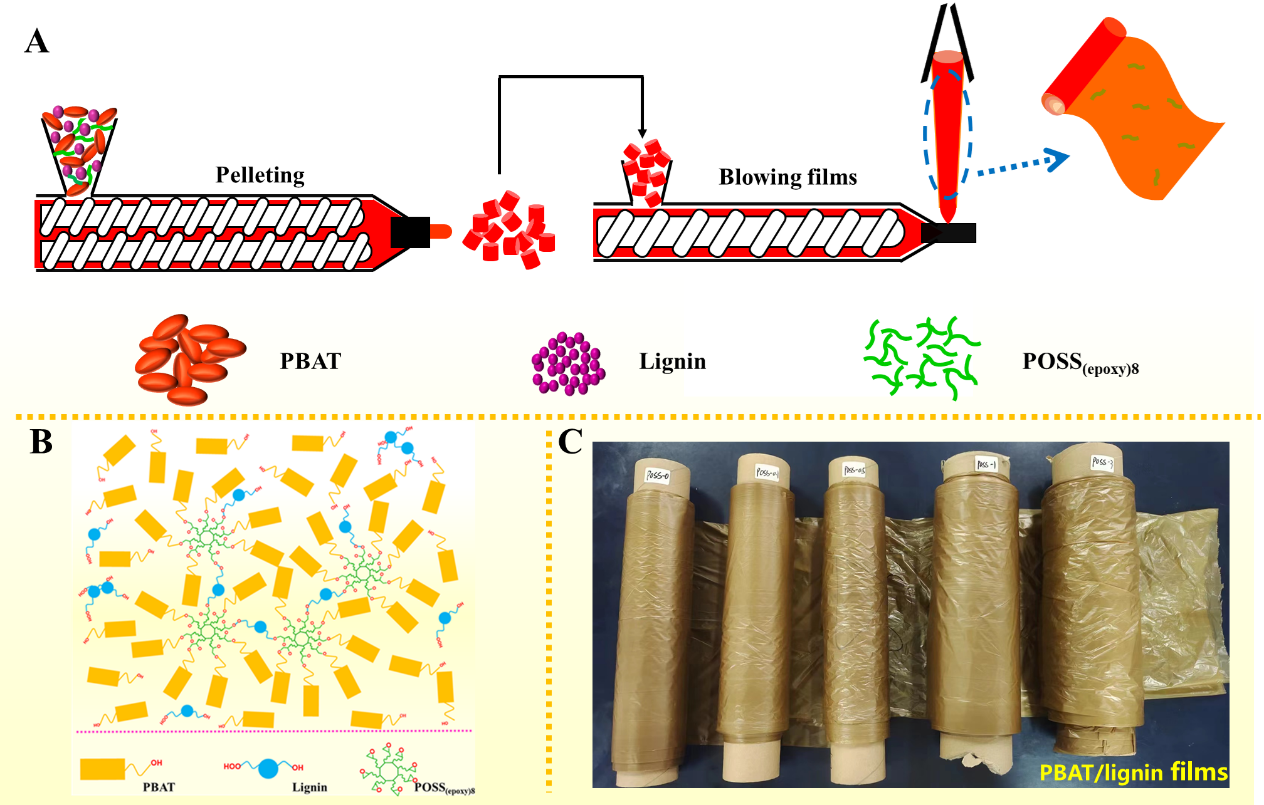Recently, Professor Xu Jing's research group of the College of Chemistry and Material Science published a paper in International Journal of Biological Macromolecules (TOP Journal of first division of Chinese Academy of Sciences, Impact Factor 8.2). The reaerch paper published online was titled: POSS (epoxy) 8 reinforced poly (butylene adipate-co-terephthalate) / lignin biodegradable films: Fabrication, Of enhanced mechanical properties and UV aging resistance, Master student Wang Jiayin is the first author of the paper, and Professor Xu Jing and Associate Professor Xie Jiazhuo are the co-corresponding authors.Our college is the only is the only corresponding institute of this work.

Figure 1: (A) Flow chart for preparation of PBAT / lignin film, (B) Schematic interaction diagram of PBAT, lignin and POSS (epoxy) 8, (C) Photo of PBAT / thin lignin
Polyadipate / butyterephthalate (PBAT) with good malleability is considered to be the main raw material to substitute polyethylene for preparing biodegradable films, which can be used in food packaging, agricultural covering and other fields. However, the high cost of PBAT has limited its large-scale development and application. Lignin, as the second largest biomass resource in the plant world, is inexpensive and has the properties of biodegradability and UV resistance. As an additive, the research of PBAT modification has attracted attention in recent years. In order to improve the compatibility of lignin and PBAT, the method of modifying lignin before melting and blending is often used, which is not conducive to industrial production and application.
Based on this, Professor Xu Jing and Associate Professor Xie Jiazhuo from Green Materials and Green Energy Research Group of Shandong Agricultural University used POSS(epoxy)8, a caged polysesquioxane rich in epoxy groups, as compatibilizers to adjust the processing process. POSS(epoxy)8 epoxy groups reacted with the terminal hydroxyl groups of PBAT, carboxyl groups and lignin hydroxyl groups, which also achieved reactivity hyperplasia during processing. The thermal properties, mechanical properties, water resistance and UV aging resistance of PBAT/ Lignin films were improved. This work provides a new idea for developing low cost and high performance PBAT-based films.
The research work was supported by the National Natural Science Foundation of China and the Key Research and Development Program of Shandong Province. The original link: https://doi.org/10.1016/j.ijbiomac.2023.127921

